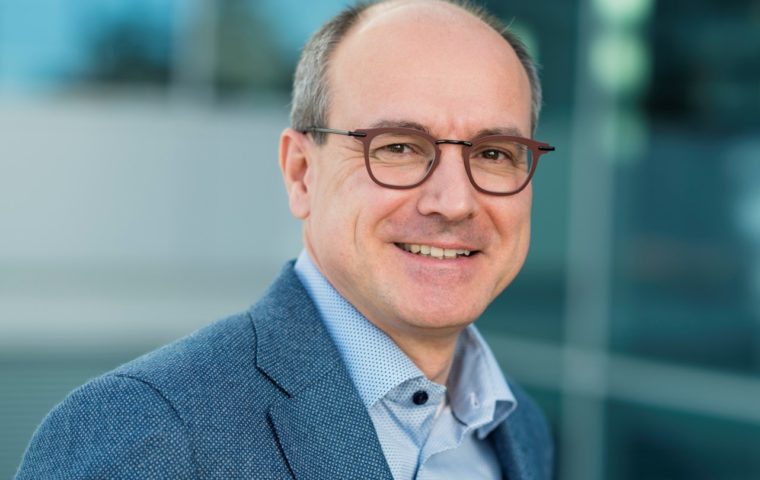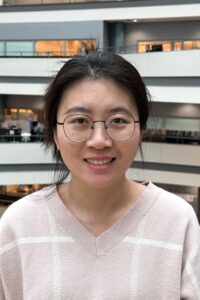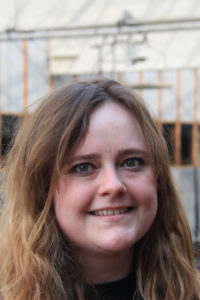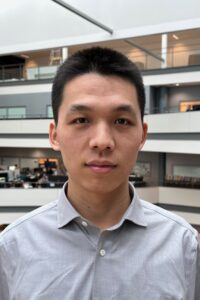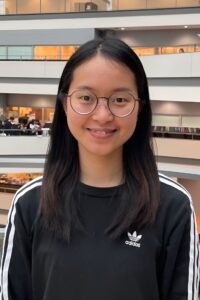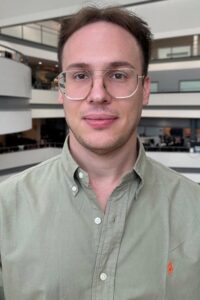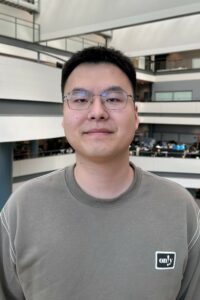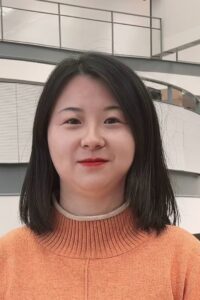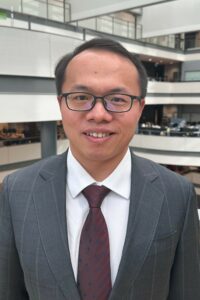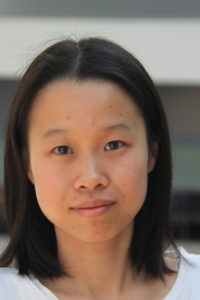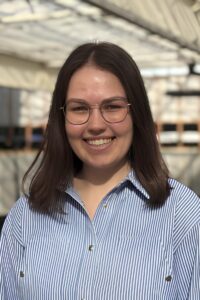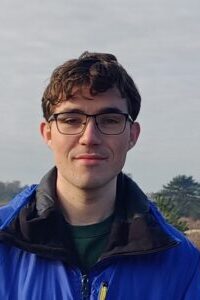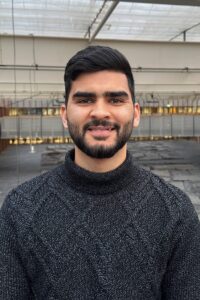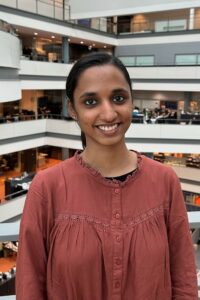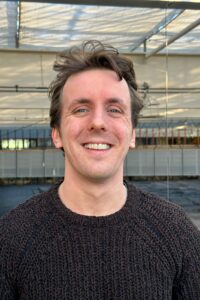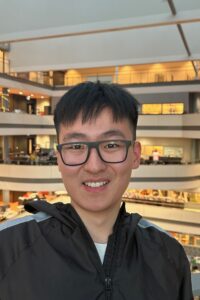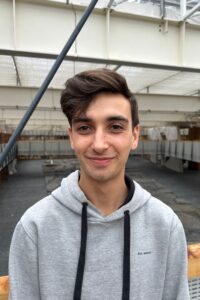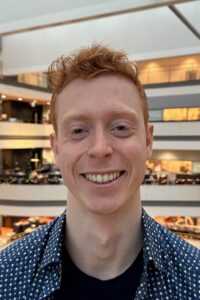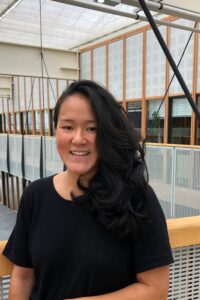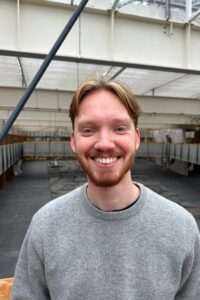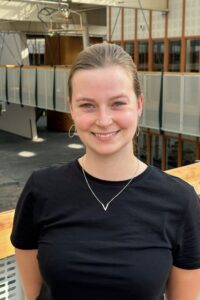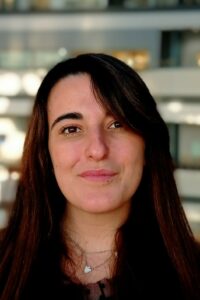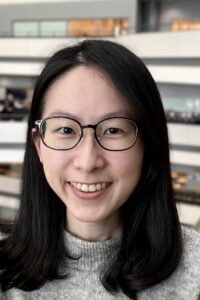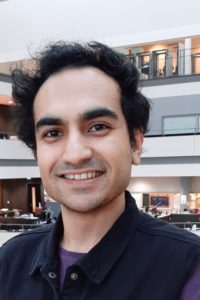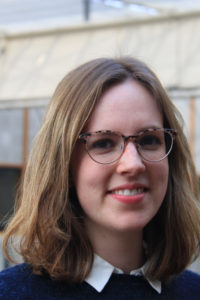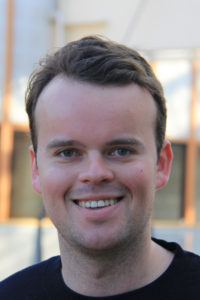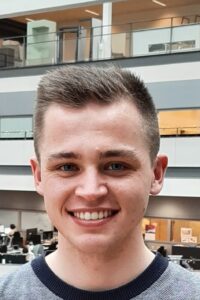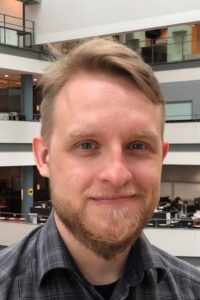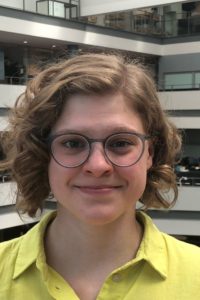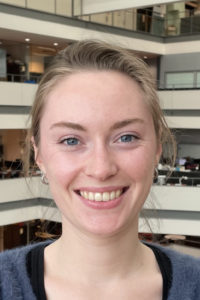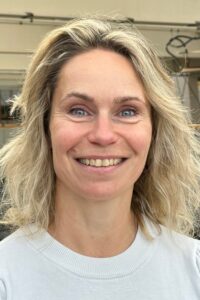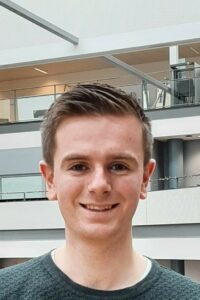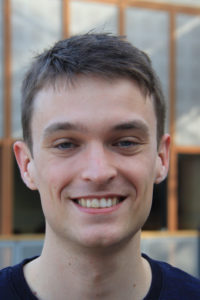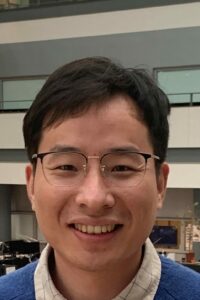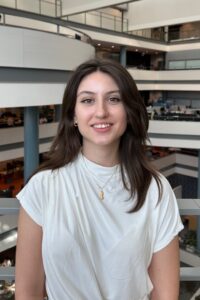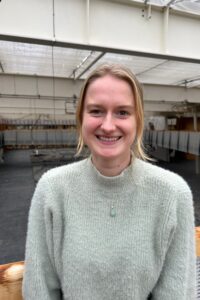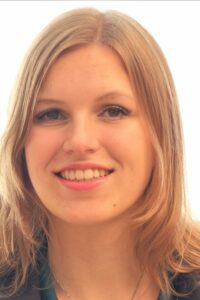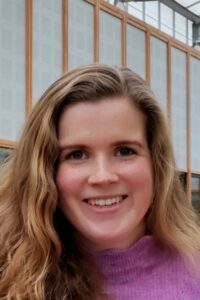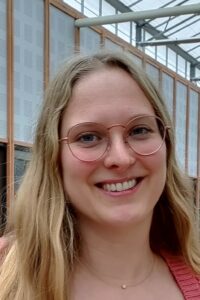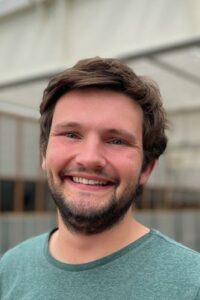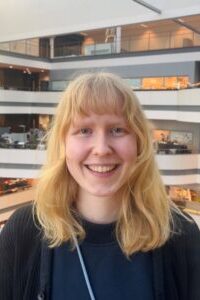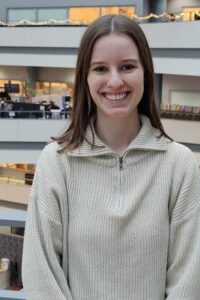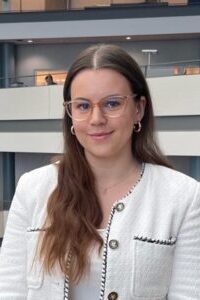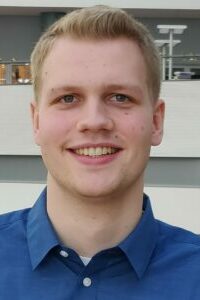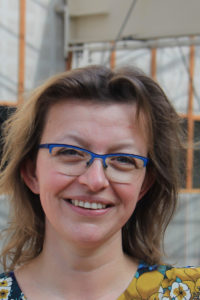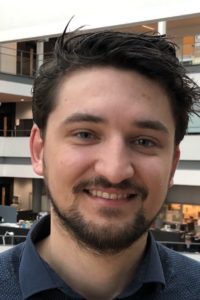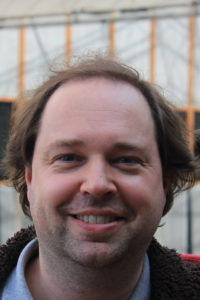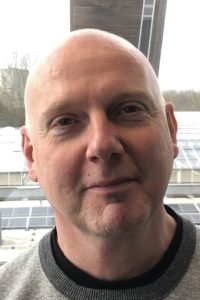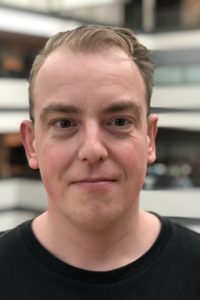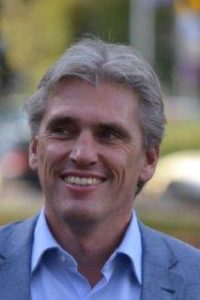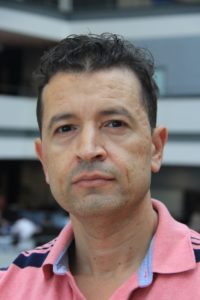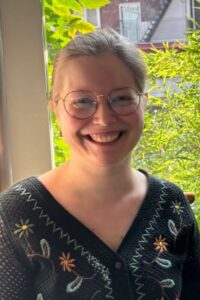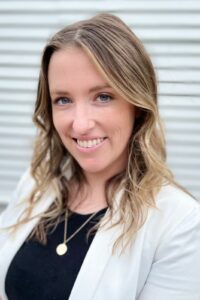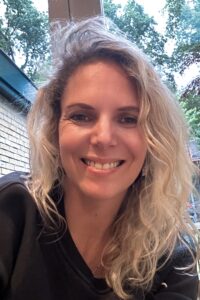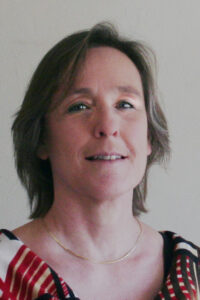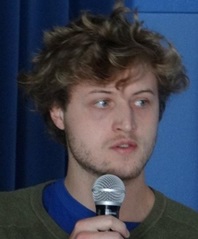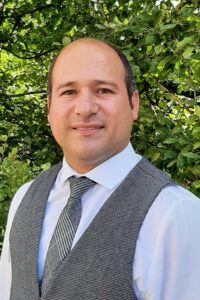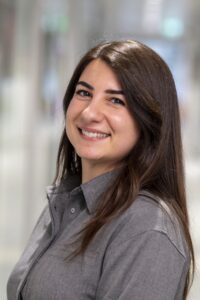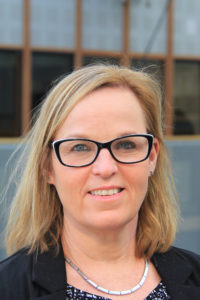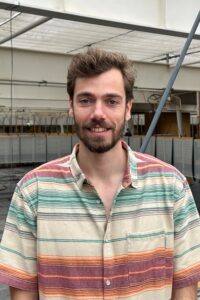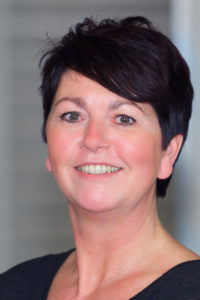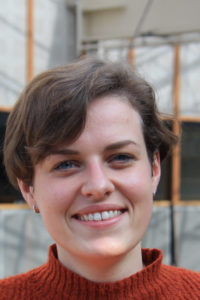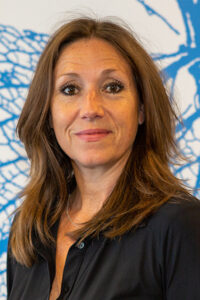Team members
prof. dr. ir. Bert Weckhuysen
Inorganic Chemistry and Catalysis - Utrecht UniversityRoom - David de Wied 4.82
+31 30 253 4328
b.m.weckhuysen@uu.nl
The central research theme of the Weckhuysen group is the development of structure-activity relationships and expert systems in the field of heterogeneous catalysis and materials science with special emphasis on >
Postdoctoral fellows
dr. Yi Wang
y.wang11@uu.nl
In this postdoctoral project, I will focus on the development of novel and efficient electrocatalytic biomass oxidation systems, and the related exploration of reaction-deactivation mechanisms making use of in-situ spectroscopy >
dr. Sophie van Vreeswijk
Inorganic Chemistry and Catalysis - Utrecht UniversityS.H.vanVreeswijk@uu.nl
In this research project, several non-commodity zeolite framework structures are investigated as examples of small molecule activation processes. To gather detailed physicochemical insights of these materials, a wide variety of >
dr. Bing Bai
b.bai1@uu.nl
In this postdoctoral project, I will focus on CO2 hydrogenation using Ni-based catalysts under reaction conditions employing operando spectroscopy to gain a deeper understanding of the structure-composition-performance relationships and the >
dr. Jiaorong Yan
Inorganic Chemistry and Catalysis - Utrecht Universityj.yan@uu.nl
The processes underlying the surface evolution and mechanisms of plastic film degradation into micro- or nano-plastics remain largely unexplored. In-situ Atomic Force Microscopy (AFM) serves as an effective technique for >
dr. Christos Chatzilias
Inorganic Chemistry and Catalysis - Utrecht Universityc.chatzilias@uu.nl
In my research hydrogen derived from water electrolysis in ambient conditions, utilizing renewable energy sources for the necessary energy demands, will be combined with direct captured carbon dioxide (CO2) to >
dr. Xuze Guan
Inorganic Chemistry and Catalysis - Utrecht Universityx.guan1@uu.nl
During my postdoctoral research, my focus will be on the development of new catalysts for propane dehydrogenation. Using a combination of advanced spectroscopy and microscopy techniques, I will delve into >
dr. Yu Cao
Inorganic Chemistry and Catalysis - Utrecht Universityy.cao1@uu.nl
During my postdoctoral research, my focus will be on the development of new catalysts tailored specifically for the decomposition of C-C bonded plastic waste into valuable chemicals. Meanwhile, I will >
dr. Xianhua Zhang
Inorganic Chemistry and Catalysis - Utrecht Universityx.zhang11@uu.nl
In this project, I will focus on studying solid catalysts under reaction conditions by using operando lab-/synchrotron-based X-ray absorption spectroscopy combined with Raman, UV-Vis spectroscopy, etc., aiming to gain a >
dr. Xinwei Ye
Inorganic Chemistry and Catalysis - Utrecht UniversityX.Ye1@uu.nl
Copper exchanged zeolites are efficient catalysts for catalytic reaction like SCR (selective catalytic reaction) and selective oxidation of methanol. Different copper exchanged zeolites are synthesized and the structure-reactivity relationship is >
PhD candidates
Fleur Neijenhuis
Inorganic Chemistry and Catalysis - Utrecht Universityf.neijenhuis@uu.nl
We are confronting with climate change and ways to abate this is to explore alternative resources for the production of fuels and chemicals. A way to do this is by >
Iwan Verduijn
Inorganic Chemistry and Catalysis - Utrecht Universityi.verduijn@uu.nl
With the rising CO2 levels, a lot of research has been going into finding ways of utilizing this industrial waste product. After being captured from the air, carbon dioxide can >
Devanshu Sajwan
Inorganic Chemistry and Catalysis - Utrecht Universityd.sajwan@uu.nl
The large application of aromatics, more specifically benzene, toluene, and xylene (BTX), as bulk chemicals in various chemical industries is well known but the major issue lies in the use >
Vaishnavi Ganesh
Inorganic Chemistry and Catalysis - Utrecht Universityv.ganesh@uu.nl
In recent years, the application of polyurethanes as insulation in residential and commercial settings has emerged as a significant driver for their growth, leading to enhanced energy efficiency and decreased >
Martijn Hut
Inorganic Chemistry and Catalysis - Utrecht Universitym.f.p.hut@uu.nl
During my research I will focus on the mechanistic consequences of alloying on Cobalt catalysts for CO/CO2 hydrogenation and I will attempt to identify trends in the alloys that may >
Haoxiang Yan
Inorganic Chemistry and Catalysis - Utrecht Universityh.yan1@uu.nl
In this research, advanced active, and robust catalyst materials for highly selective and precise metathesis of PE (LDPE, LLDPE, etc.), into a range of medium-sized alkanes (C6-C18) will be developed. >
Jan den Hollander
Inorganic Chemistry and Catalysis - Utrecht Universityj.denhollander1@uu.nl
Hydrogen is an important future energy carrier and heavily needed in hydrogenation processes in the chemical industry. Traditionally, it is produced by steam methane reforming (SMR) over a Ni/Al2O3 catalyst >
Roy Maas
Inorganic Chemistry and Catalysis - Utrecht Universityr.b.maas@uu.nl
In my research, I will investigate radical-initiated plastic cracking. Our society makes use of many products (partly) made from plastics. The most important attribute of plastic in its applications is >
Hanya Spoelstra
Inorganic Chemistry and Catalysis - Utrecht Universityh.y.spoelstra@uu.nl
This research is part of a multilateral ARC CBBC project and investigates the development of new catalysts for methane decomposition. The decomposition of methane in hydrogen and functional solid carbon >
Bas den Hartigh
Inorganic Chemistry and Catalysis - Utrecht Universityb.j.denhartigh@uu.nl
The CO2 hydrogenation reaction is a promising technique to produce value-added chemicals such as methane and other hydrocarbons and is simultaneously an interesting pathway towards a more circular economy. Recently >
Roos Grote
Inorganic Chemistry and Catalysis - Utrecht Universityr.l.grote@uu.nl
Roos Grote will work during her PhD within ICC on the CATlight project, which is a collaboration with NWO AMOLF in Amsterdam. She mainly works on the fabrication of photonic/catalytic >
Mariangela Biggiero
Inorganic Chemistry and Catalysis - Utrecht UniversityM.Biggiero@uu.nl
As a pioneer in the industry of renewable and sustainable chemistry, Avantium patented the Indium-Bismuth catalyst for formate production. Understanding the catalytic behavior of these metals as single catalysts and >
En Chen
Inorganic Chemistry and Catalysis - Utrecht UniversityE.Chen@uu.nl
My research focuses on the chemical recycling of plastics. I aim to develop a novel strategy to break down polyolefin backbone under mild reaction conditions. I am focusing on the >
Albaraa Falodah
Inorganic Chemistry and Catalysis - Utrecht UniversityA.S.M.Falodah@uu.nl
Better olefin polymerization catalysts are needed in our quest for polymers with superior properties and better recyclability. Metallocene catalysts hold great promises that are yet to be fulfilled. A major >
Mirjam de Graaf
Inorganic Chemistry and Catalysis - Utrecht UniversityM.E.deGraaf1@uu.nl
Mirjam de Graaf is PhD student under the supervision of Prof. Weckhuysen and Dr. Eline Hutter. Her research focuses on developing a coating for the removal of harmful and/or odorous >
Jelle Kranenborg
Inorganic Chemistry and Catalysis - Utrecht UniversityJ.Kranenborg@uu.nl
Catalytic CO2 hydrogenation to methanol is one of the most promising routes for CO2 utilization [1]. This reaction is known to be structure sensitive. That is, for this reaction not >
Jochem van de Minkelis
Inorganic Chemistry and Catalysis - Utrecht UniversityJ.H.vandeMinkelis@uu.nl
Due to the increasing amount of plastic waste and the associated environmental problems, the development of the recycling process has become of great importance. Chemical recycling can be used to >
Sebastian Rejman
Inorganic Chemistry and Catalysis - Utrecht UniversityS.Rejman@uu.nl
Due to insufficient recycling and incineration, plastic waste has become a global problem. In my research, I'm trying to find economically viable ways to convert polyolefin waste to a value >
Sibylle Schwartmann
Inorganic Chemistry and Catalysis - Utrecht UniversityS.M.K.Schwartmann@uu.nl
Hydrogen production via the electrochemical splitting of water is limited by the evolution of oxygen at the anode. Oxygen as a product is not much needed, and the OER is >
Joëlle Siewe
Inorganic Chemistry and Catalysis - Utrecht UniversityJ.Siewe@uu.nl
The shift away from combustion-only car engines to hybrid cars results in much lower temperatures of the exhaust gasses, for which existing Platinum Group Metal (PGM) exhaust catalysts, such as >
Fieke Sluijs
Inorganic Chemistry and Catalysis - Utrecht UniversityF.Sluijs@uu.nl
I conduct research through design on the refinery of the future in order to understand what future scenarios would be ideal and what interventions in the socio-economical system could work >
Tom Smak
Inorganic Chemistry and Catalysis - Utrecht UniversityT.J.Smak@uu.nl
In recent years, the urgency of the plastic of the plastic waste problem has become more and more clear. In my research I will focus on the production of economically >
Robin Vogel
Inorganic Chemistry and Catalysis - Utrecht UniversityR.Vogel@uu.nl
Light olefins, such as propylene and ethylene are key building blocks in the chemical industry for the production of polymers, oxygenates and other chemical intermediates. Dehydrogenation of propane, facilitated by >
Hui Wang
Inorganic Chemistry and Catalysis - Utrecht UniversityH.Wang4@uu.nl
The electrochemical reduction of carbon dioxide (CO2RR) offers a compelling route to energy storage and high-value chemical manufacturing, which reduces our dependence on fossil fuels and helps to mitigate net >
PhD candidates of Dr. Matteo Monai co-supervised by Bert Weckhuysen
Cecilia Allueva
Inorganic Chemistry and Catalysis - Utrecht Universityc.alluevayalava@uu.nl
My research is part of a multilateral ARC CBBC project and investigates innovative approaches to bimetallic catalysts for CO2 hydrogenation to higher alcohols, with the aim of contributing to sustainable chemical >
Floor Brzesowsky
Inorganic Chemistry and Catalysis - Utrecht Universityf.a.brzesowsky@uu.nl
This project will focus on achieving and understanding Resonant Catalysis (RC). RC is an emerging field of catalysis in which catalysts are stimulated by an intermittent stimulus, such as light, >
Nicolette Maaskant
Inorganic Chemistry and Catalysis - Utrecht UniversityD.N.Maaskant@uu.nl
Efficient valorization of CO2 through e.g. CO2 hydrogenation reactions is needed to create a circular and sustainable CO2 economy.1 A possible route towards improving catalysis for CO2 hydrogenation is by >
PhD candidates of Dr. Florian Meirer co-supervised by Bert Weckhuysen
Kirsten Siebers
Inorganic Chemistry and Catalysis - Utrecht UniversityK.B.Siebers@uu.nl
According to recent estimates, we cannot account for ~99% of plastic waste that escapes into the oceans. A significant portion of this missing plastic is hypothesized to result from plastic >
Laura Zoutendijk
Inorganic Chemistry and Catalysis - Utrecht UniversityL.M.Zoutendijk@uu.nl
It is widely known that large amounts of plastic waste are finding their way into the environment. These macroplastics can break down into so-called microplastics, or even smaller, nanoplastics. Little >
Adriaan Duijndam
Inorganic Chemistry and Catalysis - Utrecht UniversityA.J.A.Duijndam@uu.nl
Recently, the environmental presence of micro- and nanoplastics (MNP), which are plastic particles with a size of
PhD candidates of Dr. Ina Vollmer co-supervised by Bert Weckhuysen
Simone Mosk
Inorganic Chemistry and Catalysis - Utrecht Universityn.s.mosk@uu.nl
Plastic waste mismanagement is an urgent problem contributing to the deterioration of the environment. Recycling plastic is a potentially sustainable option to manage the plastic waste streams as opposed to >
Laura Seidling
Inorganic Chemistry and Catalysis - Utrecht Universityl.seidling@uu.nl
The rapid growth of plastic production, coupled with low recycling rates, has led to significant plastic waste accumulation. Therefore, there is a need to develop and advance suitable technologies for >
Sarah Schmidt
Inorganic Chemistry and Catalysis - Utrecht Universitys.schmidt3@uu.nl
Recycling of polyolefins such as polypropylene and polyethylene continues to be ineffective because of material degradation in mechanical recycling and high energy expenditure in pyrolysis. In this project, we are >
Adrian Hergesell
Inorganic Chemistry and Catalysis - Utrecht Universitya.h.hergesell@uu.nl
The unsatisfactory recycling rate of plastic waste is an urgent problem which we need to overcome on our way to a sustainable society. Hence, suitable technologies for the conversion of >
Guest Researchers
Technical Staff
ir. Hannie van Berlo-van den Broek
Advanced Research Center-Chemical Building Blocks ConsortiumJ.M.vanBerlo-vandenBroek@uu.nl
Hannie van Berlo-van den Broek is research technician at the Advanced Research Center Chemical Building Blocks Consortium.
Joris Janssens
Inorganic Chemistry and Catalysis - Utrecht UniversityJ.C.L.Janssens@uu.nl
Joris Janssens works as the electrocatalysis technician in the Weckhuysen group, assisting in the electrocatalytic conversion of CO2. He will (help to) design and construct electrochemical cells that can be >
Jules van Leusden
Inorganic Chemistry and Catalysis - Utrecht UniversityJ.F.vanLeusden@uu.nl
dr. Ramon Oord
Advanced Research Center-Chemical Building Blocks Consortium+31 6 39 015 426
R.Oord@uu.nl
Ramon Oord works as Research Technician and Lab-responsible for ARC CBBC.
dr. Peter de Peinder
Inorganic Chemistry and Catalysis - Utrecht UniversityPeter.de.Peinder@vibspec.com
My research is all about vibrational spectroscopy, infrared & Raman spectroscopy, in all of its forms. The most challenging part is the interpretation of vibrational spectra to understand what happens during >
ir. Fouad Soulimani
Utrecht University+31 6 22 736 141
F.Soulimani@uu.nl
I take care of the Raman and Infrared Spectroscopy instruments in the lab and give training to researchers in operating the instruments and how to correctly perform experiments. Colleagues can >
Support Staff
Anneloes Klaassen
a.klaassen@uu.nl
Anneloes Klaassen is a management assistant for the Inorganic Chemistry and Catalysis Group.
Kelsey Helm
Inorganic Chemistry and Catalysis - Utrecht Universityk.l.helm@uu.nl
Kelsey Helm is a management assistant for the Inorganic Chemistry and Catalysis Group.
Loraine Rosmuller
Inorganic Chemistry and Catalysis - Utrecht Universityl.rosmuller@uu.nl
Loraine Rosmuller is the financial controller Inorganic Chemistry and Catalysis Group.
Marijke Badings
Advanced Research Center-Chemical Building Blocks ConsortiumM.L.Badings@uu.nl
Marijke Badings is communication officer at ARC CBBC.
dr. Alessia Broccoli
Inorganic Chemistry and Catalysis - Utrecht Universitya.broccoli@uu.nl
Dr. Alessia Broccoli is currently a project manager at the ARC CBBC consortium, where she coordinates multidisciplinary research initiatives aimed at advancing sustainable processes. In this role, she supports collaboration >
Anita ter Haar
Advanced Research Center-Chemical Building Blocks ConsortiumA.terHaar@uu.nl
Anita ter Haar is the financial controller to ARC CBBC and the Weckhuysen group.
dr. Thomas Hartman
Inorganic Chemistry and Catalysis - Utrecht UniversityT.Hartman@uu.nl
As a Research and Education Designer, I am combining the fields of science, education, and arts. I am involved in our various scientific and educational projects by explaining the complex >
Joyce Kromwijk
Inorganic Chemistry and Catalysis - Utrecht UniversityJ.J.G.Kromwijk@uu.nl
Joyce Kromwijk is currently a project leader at the ARC CBBC consortium, where she coordinates chemical and chemical engineering research initiatives. She assists in collaborations between academic and industrial partners >
Hannah Thuijs
Advanced Research Center-Chemical Building Blocks ConsortiumH.G.Thuijs@arc-cbbc.nl
Hannah Thuijs is the consortium manager of ARC CBBC, as well as project manager for the Da Vinci Master Program.

